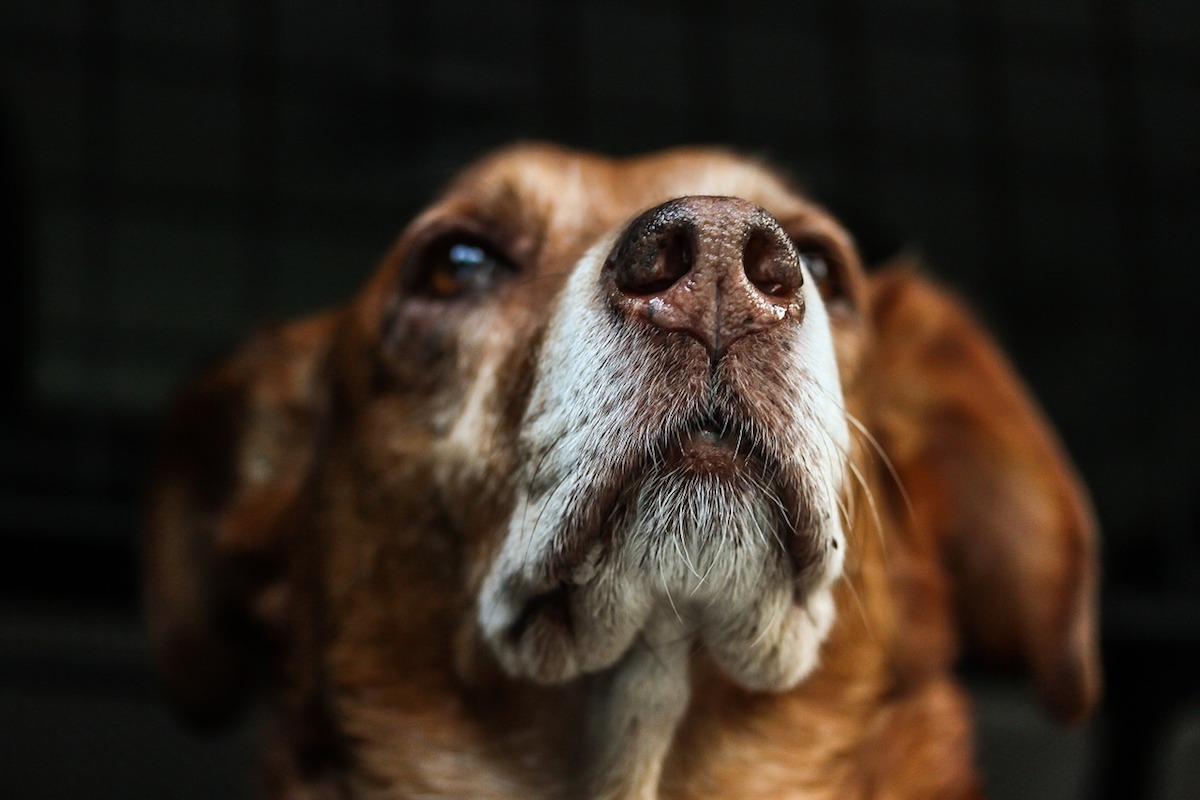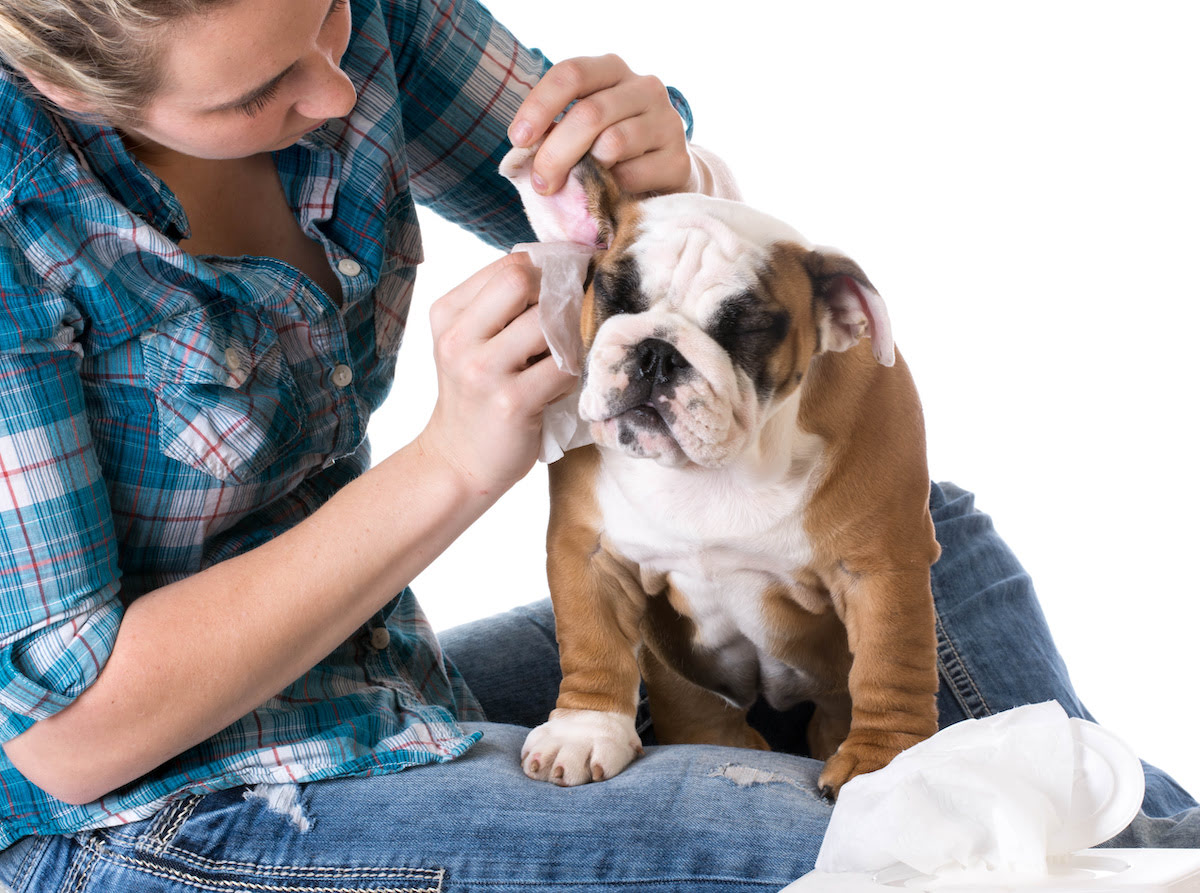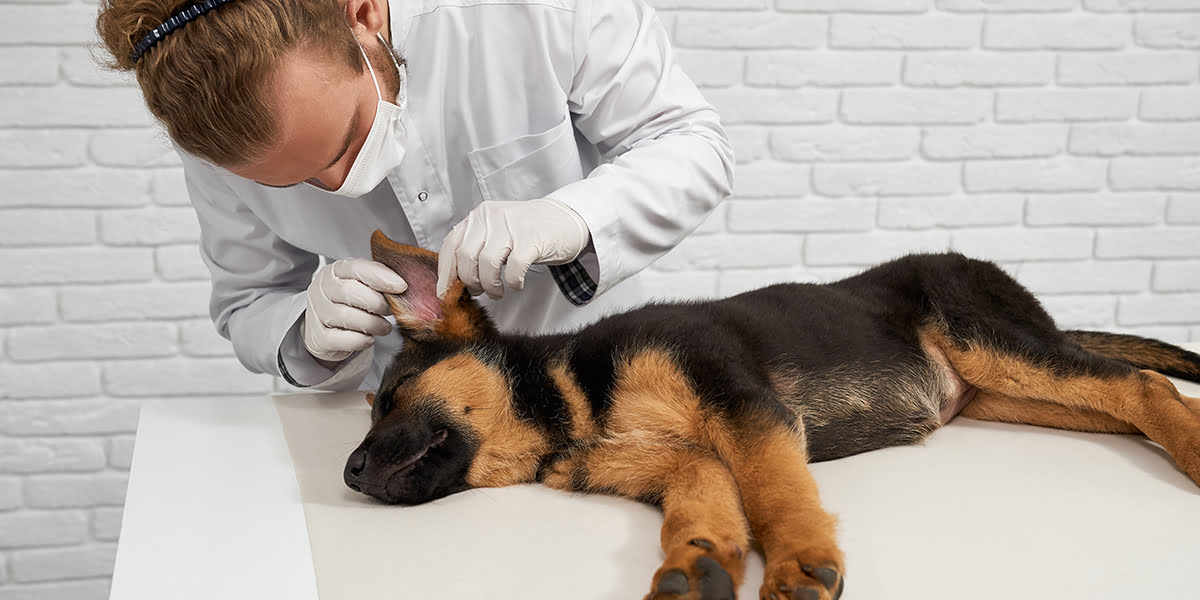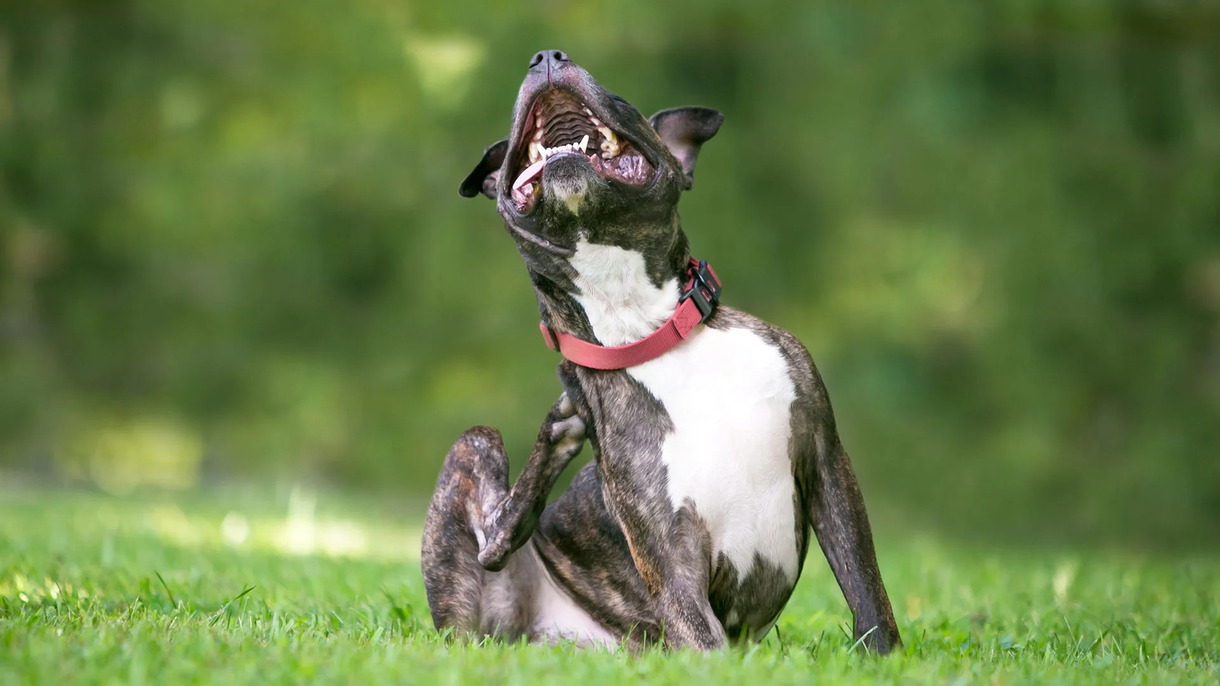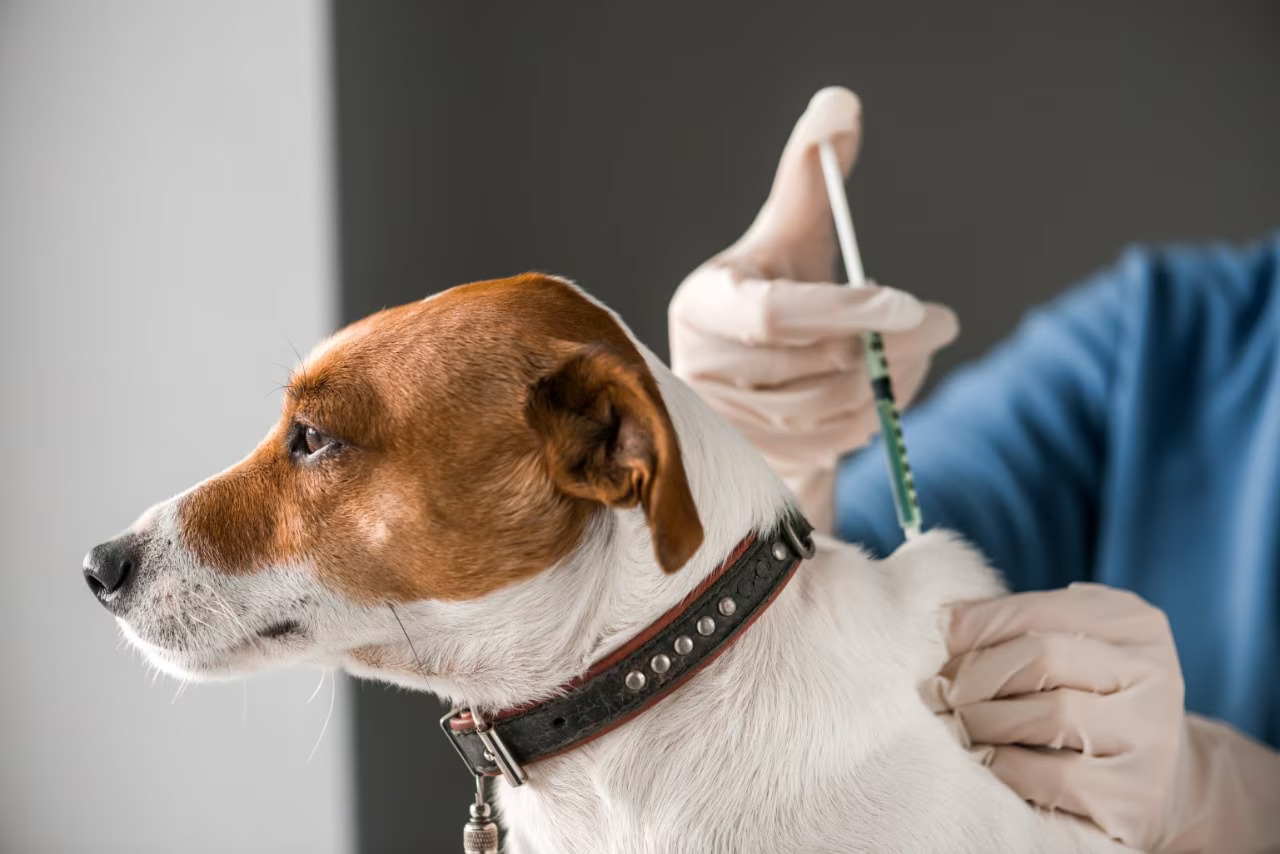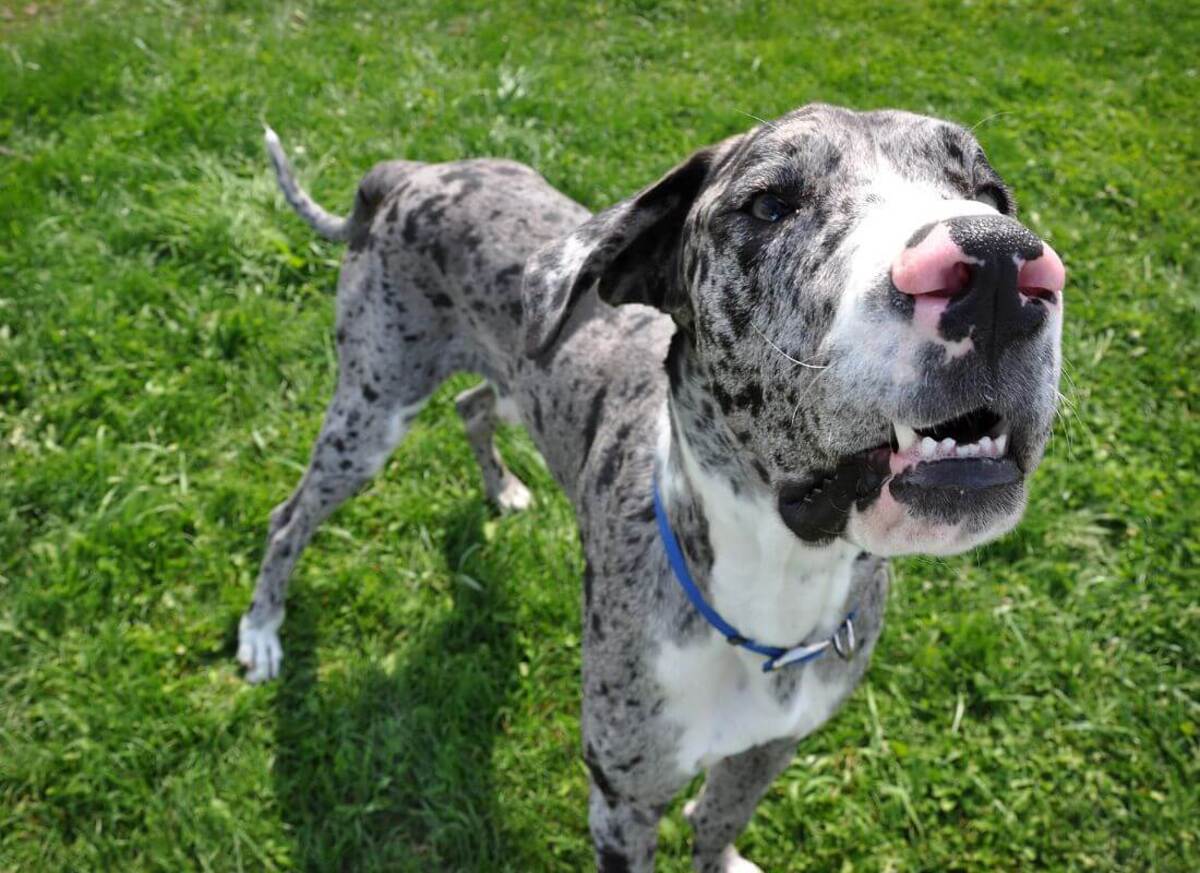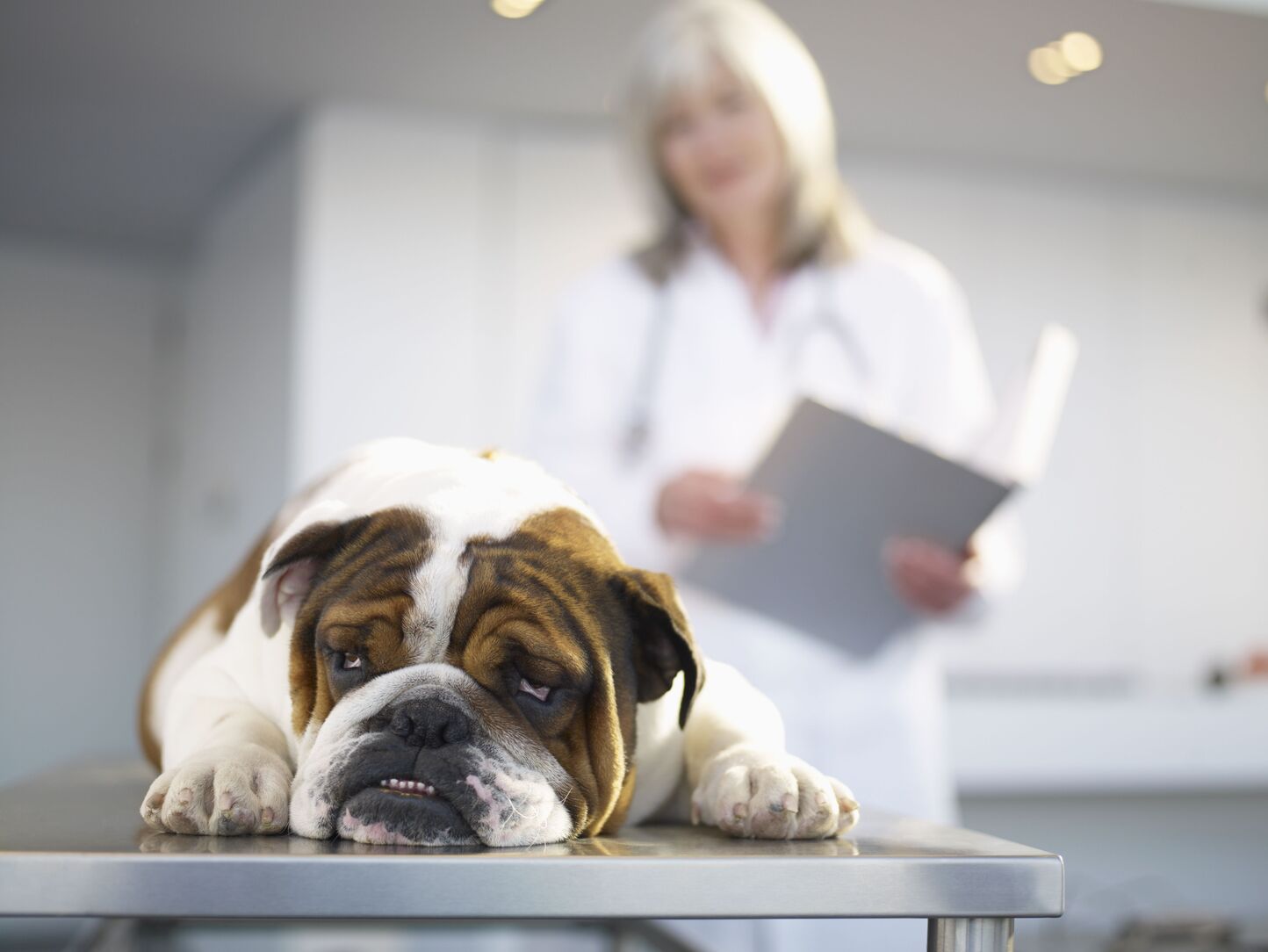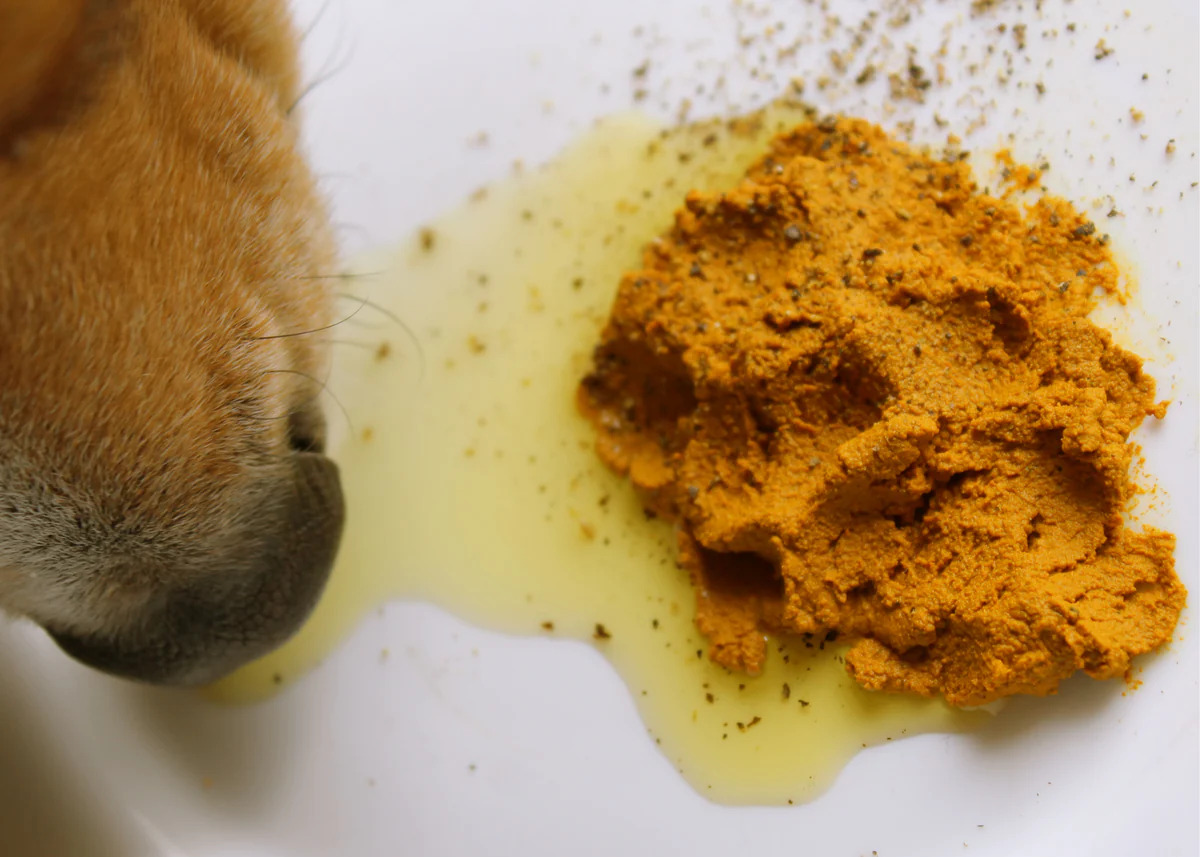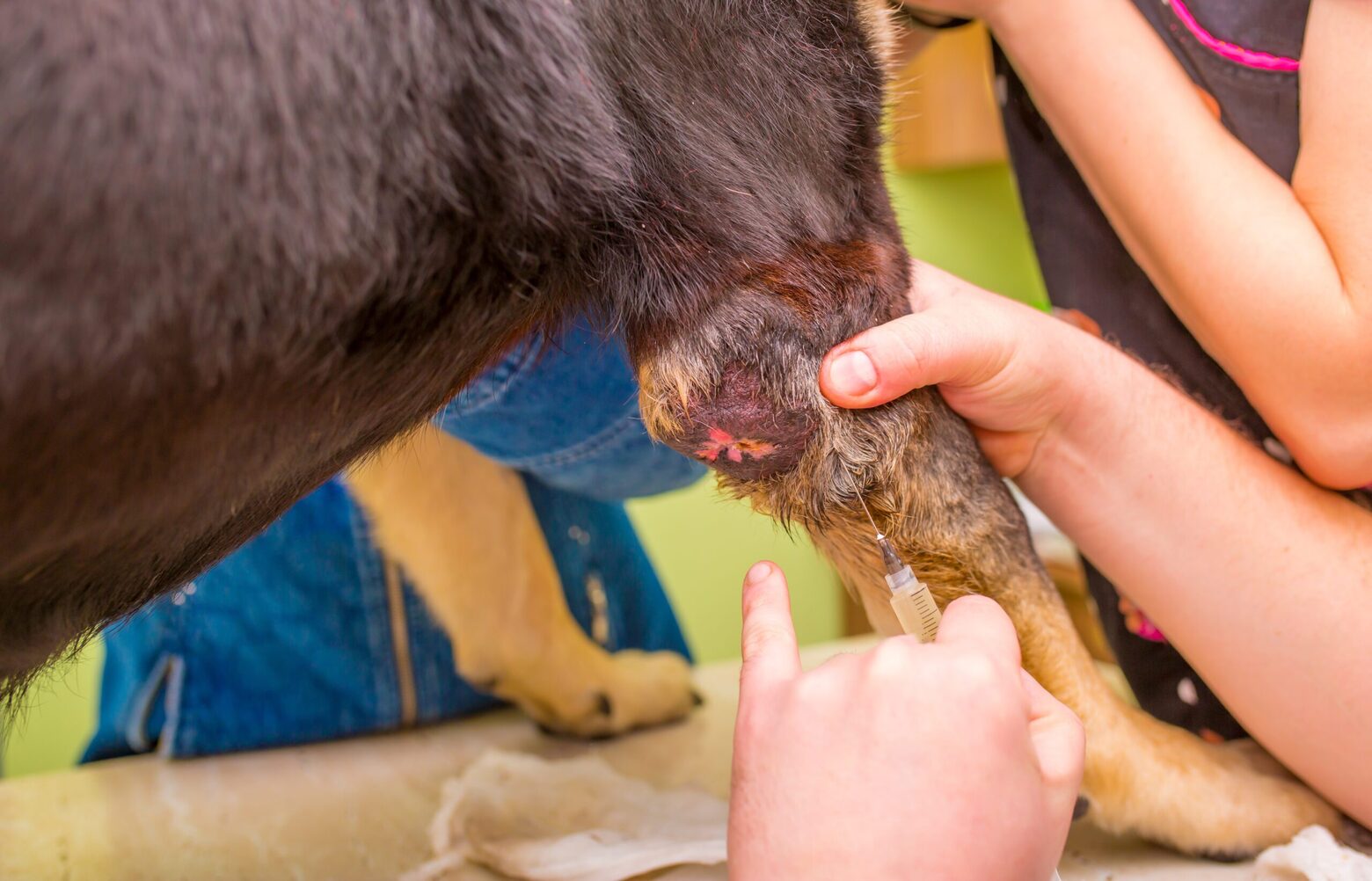Home>Health & Wellness>Common Health Issues>How To Prevent Cancer In Dogs


Common Health Issues
How To Prevent Cancer In Dogs
Published: February 4, 2024
Learn how to protect your furry friend from common health issues like cancer with our expert tips and advice. Keep your dog healthy and happy!
(Many of the links in this article redirect to a specific reviewed product. Your purchase of these products through affiliate links helps to generate commission for Pawsomeoldies.com, at no extra cost. Learn more)
Table of Contents
Introduction
Cancer is a prevalent and concerning health issue that affects not only humans but also our beloved canine companions. Just like in humans, cancer in dogs can be devastating, often leading to emotional distress and financial strain for pet owners. However, the good news is that there are proactive measures that can be taken to reduce the risk of cancer in dogs and promote their overall well-being.
In this comprehensive guide, we will explore various strategies and lifestyle choices that can help prevent cancer in dogs. From understanding the risk factors to implementing dietary and environmental changes, we will delve into practical steps that pet owners can take to safeguard their furry friends from this formidable disease.
By gaining a deeper understanding of the factors that contribute to canine cancer and learning how to mitigate these risks, pet owners can play a proactive role in promoting their dogs' health and longevity. Through a combination of education, awareness, and actionable steps, we can empower ourselves to make informed decisions that positively impact the well-being of our canine companions.
Join us on this journey as we explore the multifaceted approach to preventing cancer in dogs, encompassing nutrition, exercise, environmental considerations, and regular veterinary care. Together, we can work towards creating a healthier and happier life for our beloved canine friends.
Read more: How To Prevent Fleas From Dogs
Understanding the Risk Factors for Canine Cancer
Canine cancer, much like its human counterpart, can stem from a variety of factors, some of which are within our control, while others are not. By understanding the risk factors associated with canine cancer, pet owners can take proactive steps to minimize these risks and potentially prevent the onset of this devastating disease.
Genetics play a significant role in the development of cancer in dogs. Certain breeds are predisposed to specific types of cancer, highlighting the genetic component of the disease. For example, Golden Retrievers are more susceptible to lymphoma, while Boxers have a higher incidence of mast cell tumors. Understanding the breed-specific predispositions can help pet owners and veterinarians remain vigilant and proactive in monitoring for early signs of cancer.
Environmental factors also contribute to the risk of canine cancer. Exposure to secondhand smoke, pesticides, herbicides, and other environmental toxins can increase the likelihood of cancer development in dogs. Additionally, prolonged exposure to ultraviolet (UV) radiation, particularly in breeds with light-colored fur, can elevate the risk of skin cancer. By minimizing exposure to these environmental hazards, pet owners can help reduce the risk of cancer in their dogs.
Age is another significant risk factor for canine cancer. As dogs age, their cells are more prone to mutations and abnormalities, increasing the likelihood of cancer development. While age is a non-modifiable risk factor, pet owners can be proactive in scheduling regular veterinary check-ups and screenings as their dogs enter their senior years.
Furthermore, obesity and poor dietary habits can contribute to the risk of cancer in dogs. Overweight or obese dogs are at a higher risk of developing certain types of cancer, including mammary tumors and transitional cell carcinoma. By promoting a healthy weight through balanced nutrition and regular exercise, pet owners can mitigate this risk factor and support their dogs' overall well-being.
Understanding these risk factors empowers pet owners to make informed decisions that can positively impact their dogs' health. By recognizing the interplay of genetics, environment, age, and lifestyle factors, pet owners can take proactive steps to minimize the risk of cancer in their beloved canine companions.
Diet and Nutrition for Cancer Prevention in Dogs
Proper nutrition plays a pivotal role in the overall health and well-being of dogs, and it also holds significant implications for cancer prevention. A balanced and wholesome diet can bolster the immune system, reduce inflammation, and provide essential nutrients that support cellular health, all of which are crucial in mitigating the risk of cancer in dogs.
When it comes to crafting a cancer-preventive diet for dogs, a key focus is on incorporating high-quality, nutrient-dense ingredients. This includes lean proteins, such as chicken, turkey, and fish, which provide essential amino acids for muscle maintenance and immune function. Additionally, a variety of fresh fruits and vegetables can offer a spectrum of vitamins, minerals, and antioxidants that help combat oxidative stress and support overall cellular health.
Omega-3 fatty acids, commonly found in fish oil, have garnered attention for their potential anti-cancer properties. These essential fatty acids not only contribute to healthy skin and coat but also exhibit anti-inflammatory effects, which can be beneficial in reducing the risk of certain types of cancer in dogs. Moreover, the inclusion of fiber-rich foods, such as sweet potatoes and green leafy vegetables, can aid in maintaining digestive health and promoting a balanced microbiome, which in turn supports the immune system.
On the flip side, it's equally important to minimize the consumption of processed and high-glycemic foods, as these can contribute to inflammation and insulin spikes, potentially creating an environment conducive to cancer development. Avoiding excessive intake of simple carbohydrates and processed treats can help regulate blood sugar levels and reduce the risk of obesity, a known risk factor for certain types of cancer in dogs.
In addition to dietary considerations, hydration is a critical aspect of canine cancer prevention. Providing access to clean, fresh water at all times is essential for supporting proper organ function, aiding in digestion, and facilitating the elimination of toxins from the body. Adequate hydration also plays a role in maintaining healthy cellular processes and minimizing the risk of urinary tract-related cancers.
By prioritizing a balanced and nutrient-rich diet for dogs, pet owners can actively contribute to cancer prevention and overall well-being. While diet alone cannot guarantee immunity from cancer, it serves as a foundational element in a holistic approach to promoting a healthy and resilient canine constitution. Through mindful dietary choices and a commitment to providing optimal nutrition, pet owners can play a proactive role in safeguarding their dogs from the threat of cancer.
Exercise and Weight Management for Cancer Prevention in Dogs
Regular exercise and weight management are integral components of a proactive approach to preventing cancer in dogs. Just as in humans, maintaining a healthy weight and engaging in regular physical activity can significantly impact a dog's overall health and well-being, potentially reducing the risk of cancer development.
Obesity is a well-established risk factor for various health issues in dogs, including cancer. Overweight or obese dogs are more susceptible to certain types of cancer, such as mammary tumors, and are at a higher risk of developing chronic inflammation, which can create an environment conducive to cancer growth. By implementing a structured exercise regimen and promoting weight management, pet owners can mitigate these risks and support their dogs' long-term health.
Regular physical activity not only helps dogs maintain a healthy weight but also contributes to overall fitness and vitality. Engaging in activities such as brisk walks, interactive play sessions, and agility exercises not only burns calories but also stimulates circulation, supports musculoskeletal health, and promotes mental stimulation. These benefits extend beyond weight management, encompassing a holistic approach to canine well-being that can potentially reduce the risk of cancer.
Moreover, exercise plays a crucial role in regulating hormone levels and metabolic processes, which can impact the risk of certain cancers in dogs. For example, regular physical activity can help modulate insulin sensitivity and reduce the likelihood of insulin resistance, a factor associated with an increased risk of cancer development. Additionally, exercise supports immune function, contributing to a robust immune response that can help identify and eliminate abnormal cells before they progress into cancerous growths.
Incorporating regular exercise into a dog's routine also fosters a strong bond between pet and owner, providing opportunities for social interaction, mental stimulation, and emotional well-being. This shared activity not only strengthens the human-canine relationship but also contributes to a positive and enriching lifestyle for both parties involved.
In conjunction with exercise, weight management is a critical aspect of cancer prevention in dogs. By monitoring food portions, selecting high-quality, nutritionally balanced diets, and avoiding excessive treats, pet owners can help maintain their dogs at an optimal weight. A healthy weight not only reduces the risk of obesity-related cancers but also supports overall metabolic function, organ health, and immune competence.
By prioritizing regular exercise and weight management, pet owners can actively contribute to cancer prevention and promote the overall health and vitality of their canine companions. Through these proactive measures, pet owners can play a pivotal role in creating a supportive and nurturing environment that reduces the risk of cancer and fosters a vibrant and resilient life for their dogs.
Environmental Factors and Toxin Exposure
Environmental factors and toxin exposure play a significant role in the risk of cancer development in dogs. Dogs, much like humans, can be exposed to a variety of environmental hazards that have the potential to impact their health and well-being. Understanding these factors and taking proactive steps to minimize toxin exposure can significantly contribute to cancer prevention in dogs.
One of the primary environmental factors linked to canine cancer is secondhand smoke. Dogs living in households where smoking occurs are at an increased risk of developing certain types of cancer, including lung cancer and lymphoma. The carcinogens present in cigarette smoke can be inhaled by dogs, leading to detrimental effects on their respiratory system and overall health. By creating a smoke-free environment for dogs, pet owners can mitigate this risk and promote a healthier living space for their pets.
Pesticides and herbicides are another environmental concern that can impact the risk of cancer in dogs. Exposure to these chemicals, whether through direct contact or ingestion, has been associated with an elevated risk of certain cancers, including lymphoma and bladder cancer. Pet owners should be mindful of their use of lawn and garden chemicals, opting for pet-safe alternatives and ensuring that their dogs are not exposed to potentially harmful substances.
Furthermore, ultraviolet (UV) radiation from the sun poses a risk of skin cancer in dogs, particularly those with light-colored fur and exposed skin. Prolonged sun exposure, especially during peak hours, can increase the likelihood of skin cancer development. Pet owners can take proactive measures to minimize UV exposure by providing shaded areas, using pet-safe sunscreen on vulnerable areas, and scheduling outdoor activities during non-peak hours to reduce the risk of UV-related cancers.
Indoor toxins, such as household cleaners, air fresheners, and certain plants, can also pose a risk to dogs. Many common household products contain chemicals that, when inhaled or ingested, can have adverse effects on a dog's health, potentially contributing to the development of cancer. Pet owners should be diligent in selecting pet-safe cleaning products and ensuring that their living environment is free from potentially harmful substances.
By being mindful of these environmental factors and toxin exposure, pet owners can take proactive steps to create a safer and healthier living environment for their dogs. Minimizing exposure to secondhand smoke, pesticides, UV radiation, and indoor toxins can significantly contribute to cancer prevention, supporting the overall well-being of canine companions. Through awareness and proactive measures, pet owners can play a pivotal role in safeguarding their dogs from the potential risks associated with environmental toxins.
Read more: How To Prevent Arthritis In Dogs
Regular Veterinary Check-ups and Early Detection
Regular veterinary check-ups are paramount in maintaining the health and well-being of dogs, and they also play a crucial role in early cancer detection. By scheduling routine visits to the veterinarian, pet owners can ensure that their dogs receive comprehensive physical examinations, preventive care, and screenings that are instrumental in identifying potential health concerns, including early signs of cancer.
During veterinary check-ups, veterinarians conduct thorough physical examinations to assess a dog's overall health, including the detection of any abnormalities or irregularities that may indicate the presence of cancerous growths. Palpation of the lymph nodes, abdomen, and mammary glands, as well as a comprehensive evaluation of the skin and coat, can provide valuable insights into a dog's health status. Additionally, veterinarians may perform diagnostic tests, such as blood work, urinalysis, and imaging studies, to further evaluate a dog's internal health and identify any potential indicators of cancer.
Early detection is a critical component of cancer prevention and treatment in dogs. Many types of cancer, if identified in their early stages, are more responsive to treatment and may have a better prognosis. Through regular veterinary check-ups, pet owners can facilitate the early detection of cancerous growths, allowing for prompt intervention and treatment planning. This proactive approach not only enhances the likelihood of successful outcomes but also minimizes the potential impact of cancer on a dog's overall health and quality of life.
In addition to physical examinations and diagnostic tests, veterinarians may recommend specific cancer screenings based on a dog's breed, age, and predisposition to certain types of cancer. For example, breeds such as Golden Retrievers may benefit from regular screenings for lymphoma, while Boxers may undergo specialized tests for the early detection of mast cell tumors. By tailoring preventive care and screenings to a dog's individual risk factors, veterinarians can optimize the potential for early cancer detection and intervention.
Furthermore, pet owners play a pivotal role in monitoring their dogs for any changes in behavior, appetite, or physical appearance between veterinary visits. Being attuned to subtle shifts in a dog's health and promptly reporting any concerns to the veterinarian can contribute to early cancer detection and timely intervention. By maintaining open communication with the veterinary team and actively participating in their dogs' health care, pet owners can further support the early detection and management of potential cancerous conditions.
In essence, regular veterinary check-ups are a cornerstone of proactive cancer prevention in dogs. By prioritizing preventive care, comprehensive examinations, and early detection strategies, pet owners can play a pivotal role in safeguarding their dogs' health and well-being. Through collaborative efforts between pet owners and veterinary professionals, the potential impact of cancer on dogs can be minimized, promoting a vibrant and resilient life for our beloved canine companions.
Conclusion
In conclusion, the prevention of cancer in dogs encompasses a multifaceted approach that addresses various factors contributing to the risk of this formidable disease. By understanding the interplay of genetics, environmental influences, lifestyle choices, and proactive healthcare measures, pet owners can actively contribute to the well-being of their canine companions and potentially reduce the risk of cancer development.
From the genetic predispositions of specific breeds to the impact of environmental toxins and the role of nutrition and exercise, the proactive prevention of cancer in dogs requires a comprehensive and holistic approach. By recognizing the significance of these factors and taking proactive steps to mitigate risks, pet owners can create a supportive and nurturing environment that promotes the overall health and resilience of their dogs.
Diet and nutrition play a pivotal role in cancer prevention, with a focus on high-quality, nutrient-dense ingredients that support cellular health and immune function. Additionally, regular exercise and weight management not only contribute to maintaining a healthy weight but also support overall fitness, vitality, and immune competence. By prioritizing a balanced diet and regular physical activity, pet owners can actively contribute to reducing the risk of cancer in their dogs.
Environmental factors and toxin exposure also warrant attention, as minimizing exposure to secondhand smoke, pesticides, UV radiation, and indoor toxins can significantly contribute to cancer prevention. Creating a safe and healthy living environment for dogs is instrumental in mitigating the potential risks associated with environmental hazards.
Furthermore, regular veterinary check-ups and early detection strategies are paramount in identifying potential health concerns, including early signs of cancer. By collaborating with veterinary professionals and participating in preventive care and screenings, pet owners can facilitate the early detection and management of potential cancerous conditions, enhancing the likelihood of successful outcomes and minimizing the impact of cancer on their dogs' overall health and well-being.
In essence, the prevention of cancer in dogs is a proactive and collaborative effort that encompasses genetics, environment, nutrition, exercise, and healthcare. By embracing a holistic approach and taking proactive measures, pet owners can play a pivotal role in creating a supportive and nurturing environment that reduces the risk of cancer and fosters a vibrant and resilient life for their beloved canine companions.
